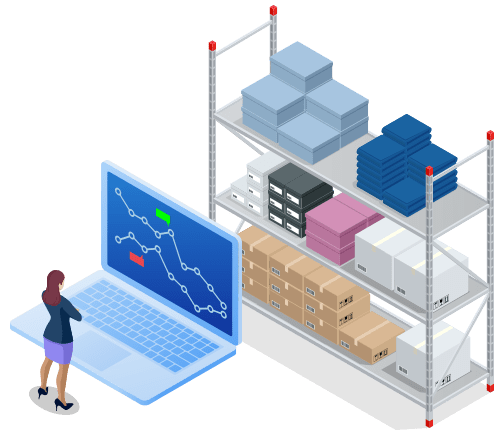
Choosing the right software for managing your assets is an important decision. In asset-intensive sectors, the terms EAM software and CMMS frequently emerge. If you’re uncertain about the optimal choice for your enterprise, conducting an in-depth EAM vs. CMMS analysis will steer you toward the right decision.
What is CMMS?
Computerized Maintenance Management System (CMMS) software offers a solution for overseeing maintenance and assets. It’s valuable across industries such as manufacturing, construction, utilities, and transportation. CMMS assists in monitoring maintenance needs and work orders.
Furthermore, a CMMS aids in forming an asset inventory encompassing tools or machinery necessitating maintenance or repair. This enables you to monitor each item’s status, facilitating informed decisions on servicing or replacement. This knowledge helps evaluate cost-effectiveness, contrasting the expense of repair against purchasing new items at full retail price whenever breakdowns occur.
What is EAM?
Enterprise Asset Management (EAM) software is a versatile tool for overseeing maintenance across the spectrum of assets, from minor equipment to large industrial machinery. It empowers you to track asset details, locations, costs, and maintenance schedules. With EAM software, generating reports becomes effortless, offering a clear view of assets demanding repairs or replacement.
CMMS VS EAM: What is the difference?
A CMMS, or computerized maintenance management system, lives up to its name by serving as a comprehensive software solution for managing maintenance activities. While there are certain similarities between CMMS and enterprise asset management (EAM) software, they are applied differently and cater to distinct purposes. The subsequent table outlines notable distinctions between the two:
Parameters | CMMS | EAM |
Definition | A CMMS (Computerized Maintenance Management System) automates data collection and analysis to optimize maintenance operations, including management of preventive maintenance activities. | An EAM (Enterprise Asset Management) software automates data analysis to optimize maintenance operations and offers visibility into crucial assets across an organization. |
Advantages | Offers a centralized asset information source, reduces equipment failure risk, enhances productivity and morale, provides asset identification and management, and streamlines processes through automation. | Provides a unified asset view, mitigates equipment failure risk, boosts productivity, allows clear asset identification and facility monitoring, and enhances processes through automation. |
Features | Monitors and optimizes work orders, inventory, and asset maintenance, tracks critical assets, and monitors facility conditions. | Monitors asset risk, disposal, compliance, maintenance workflows (reactive, proactive, preventive), and may include CMMS features. |
Key Capabilities | Reactive, Proactive, Preventive, and Preventative Maintenance Management Workflows, integrated with Computerized Maintenance Management System (CMMS) platforms, which may encompass Enterprise Asset Management (EAM) functionalities. | Strategic Capitalization, Procurement Excellence, Seamless Asset Integration, Optimal Workflow Design, Efficient Production Load Balancing, Proactive Asset Maintenance, Regulatory Compliance Oversight, Comprehensive Asset Risk Management, and Responsible Asset Disposition. |
Usage | Primarily used by Maintenance and Operations teams. | Involves Finance, Maintenance, Operations, Productions, and Compliance teams. |
Implementation | Typically involves a single implementation cycle. | Generally, follows phased enterprise-wide cycles. |
Decision Making | Mainly influenced by Maintenance and Operations Teams. | Involves C-Level Suite, Maintenance, and Operations Teams. |
Ideal Application | Ideal for asset-intensive industries aiming to maximize asset uptime. | Suited for asset-intensive industries focusing on holistic asset lifecycle management. |
Which is more suitable for your organization: an EAM or CMMS?
Distinct operational scenarios outline whether EAM or CMMS suits your organization. The decision hinges on understanding your requirements and objectives.
Opt for CMMS When:
- Boosting maintenance KPIs is a priority.
- Slashing unplanned downtime for crucial machinery matters.
- Trimming emergency repair costs is crucial.
- Minimizing reactive maintenance tasks is vital.
- Enhancing workplace safety and health is a priority.
- Extending asset lifespan and reducing disposal rates matters.
Opt for EAM When:
- Tracking the entire life cycle of physical assets and infrastructure is imperative.
- Amplifying asset performance and uptime is a prime goal.
- Managing operational and procurement expenses is pivotal.
- Valuing assets and formulating procurement strategies are crucial.
- Accessing technical and informational asset data is essential.
Conclusion
CMMS and EAM systems originated from the distinct needs of various manufacturing sectors, yet both share a common goal: automating labor-intensive workflows. Evolving over time, they’ve garnered vital data for informed, strategic decisions. The horizon holds promise with machine learning and AI tools, poised to integrate even more accurate data, facilitating genuine predictive maintenance approaches. The journey to efficient asset management continues as technology advances, enabling businesses to operate smarter and anticipate future needs.








